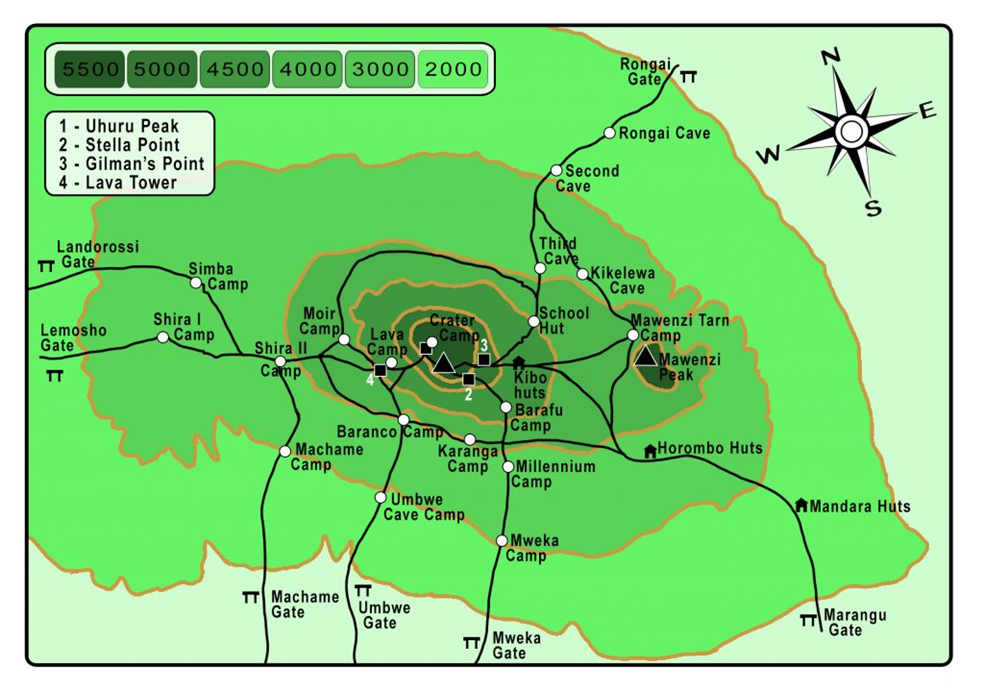


The origin of the name 'Kilimanjaro,' and hence Mount Kilimanjaro, remains shrouded in mystery, with various interpretations from Swahili and Chagga dialects. Terms like "Mountain of Greatness," "Mountain of Whiteness," and "Mountain of Caravans" have been proposed, all rooted in these linguistic influences. The etymology is often linked to the Swahili word 'kilima,' meaning 'top of the hill.' Another suggestion is the Chagga term "kilemakyaro," translating to "impossible journey." However, the true origin of the name remains a subject of speculation and discussion.
In the second century AD, Ptolemy, the Greek astronomer, mentioned mysterious lands south of Somalia with a "great snow mountain." This information likely came from Phoenician sources who had circumnavigated Africa. The subsequent millennium saw no significant references to Kilimanjaro until Chinese traders noted observations of a great mountain in the twelfth century. Kilimanjaro maintained an air of myth and superstition, hidden in the interior of Africa, until British explorers sought the source of the Nile around 1840. Missionary Rebmann, in 1848, became the first European to lay eyes on Kilimanjaro, dispelling doubts about a snow-capped mountain on the equator.
In 1887, German geographer Professor Hans Meyer attempted the summit of Kibo but faced challenges like thick snow and ice walls. Meyer, accompanied by Ludwig Purtscheller, successfully reached the summit in 1889. Although they established the trail for future climbs, it wasn't until 1912 that climbing activity intensified, with the establishment of a path from Marangu and the construction of huts.
Born of Earth's crust movements that created the Great Rift Valley, Kilimanjaro rose from volcanic activity around 25 million years ago. The mountain features five major ecological zones, each influenced by altitude, rainfall, temperature, flora, and fauna. These zones span approximately 1000m in altitude, experiencing corresponding changes in climate and life, from forest to summit.
The mountain's perfectly shaped, snow-capped volcano, rising to 5895m, offers various climbing routes. The Machame, Marangu, Lemosho, Rongai, and Umbwe routes lead through forest and moorland areas, converging on the south circuit path between 3500m and 4500m. The final ascent to the summit involves walking, scrambling, and, for technical climbers, several trails like Rebman glacier, Decken glacier, or Heim glacier. The climb typically starts at Kibo hut around 2:00 am, reaching the summit before dawn to witness the sunrise and gaze across the vast African bush land from the "Roof of Africa."
Covering the area above 2,700 meters, Kilimanjaro National Park encompasses moorland, highland zones, Shira Plateau, and the peaks of Kibo and Mawenzi. Established in 1973, the park includes corridors through the Kilimanjaro Forest Reserve, a Game Reserve founded in 1921. Officially opened in 1977, the park is a testament to the breathtaking beauty and ecological diversity of Mount Kilimanjaro.

There are seven established routes to the summit of Mount Kilimanjaro, Uhuru Peak, with one starting on the Northern side and the remaining six on the Southern side:
The most commonly asked question is, "Which is the best route to climb Kilimanjaro?" The answer depends on your preferences. Here are our recommendations:
Most Scenic Route: The Lemosho route, approaching from the West, offers the best views with spectacular vistas in all directions, making it the most scenic route to climb Kilimanjaro.
Quietest Route: If avoiding crowds is a priority, the Rongai route is the best choice. However, be aware that the success rate is lower on this route.
Most Challenging Route: For those seeking adventure and a unique wilderness experience, the crater camp option is the best route to climb Kilimanjaro. Less than 1% of climbers get to experience this, and those who do rave about it.
For more specific details, consider your preferences regarding acclimatization, summit difficulty, route crowds, accommodation, safety, and success rates when planning your Kilimanjaro climb.
Here is a list of travel information you may find useful when planning your safari holiday tour of Kenya and Tanzania. If you require any further details or have questions on something not covered by this list, please get in touch with the Grayton Expeditions team.

Tourists visiting Kenya must have a valid visa. Your passport must also be valid for at least six months after the date
Read More